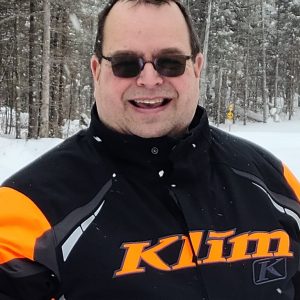Though the trails in Elk River, Big Lake and virtually all of the metro area were covered with little to no snow through the first official week of winter, the Sherburne County Sheriff’s Department has still been planning snowmobile safety instruction for county youth this season.
The county will continue its regular program at least this year and next winter due in part to a two-year safety enforcement grant received from the state of Minnesota, approved by the county board Dec. 20. The grant would reimburse the county up to $5,864 each year for patrol and instructional costs including the purchase of a new patrol snowmobile (to replace one that was “breaking down quite a bit,” county Sgt. Dan Frank told the Star News) and classes to be scheduled for participating youth, and instructor training for the sheriff’s deputies and reserve unit members who will lead those classes.
All Minnesota youth and adults born after Dec. 31, 1976, are required by state law to carry an updated safety certificate when driving a snowmobile. Youth cannot hold a valid certificate until age 12, but at 11 they may take the educational course. That can involve a traditional program with a minimum eight hours of classroom time followed by skills review on a riding performance course. However, according to the DNR’s current regulation guide, youth participants may opt to take a CD-based course at home to be followed by a one-day classroom review and the riding performance course.
From age 16, snowmobilers may earn their certification through an independent-study course including information on speed and reaction times, safe stopping distances, accident prevention and rules for group riding. Those applicants must pass a written test and pay $10 for their certification.
Snowmobilers will learn they may legally cross roadways only at intersections and at 90-degree angles (or straight across the roads). They must stop completely before crossing a street or road, with or without a stop sign.
Drivers of legal drinking age who may choose to drink alcohol before hitting the trails will want to know they could face penalties for operating a snowmobile while impaired just as they could when driving any other vehicle under the influence. If stopped and tested for a blood alcohol reading of .08 or higher, a snowmobiler could be charged with a misdemeanor (at minimum) which could carry penalties of fines up to $1,000, loss of snowmobiling privileges for one year, and a possible jail sentence. Additional penalties at gross misdemeanor or felony levels, for when a snowmobiler may have prior convictions or get stopped with a passenger under age 16, could include license plate impoundment and vehicle forfeiture for all vehicles owned by the offender — including cars or trucks.
City ordinances in Big Lake and Elk River prohibit snowmobilers from driving within 100 feet of skating rinks or sliding areas. Elk River’s code also specifies snowmobilers must not operate their sleds within 100 feet of shore or any fish houses on Lake Orono.
State law prohibits snowmobilers from exceeding 50 mph on any public water or land; counties may appeal to allow daytime speeds up to 65 mph on lakes covering more than 10,000 acres. Where riding is allowed in city streets and alleys, Big Lake’s code prohibits speeds greater than 25 mph while Elk River caps its permitted speed at 20 mph.
Some neighborhood routes in Elk River are legally open only to residents of Elk River, and they must pay fees for “local access stickers” at City Hall that they are required to display on both sides of their snowmobile’s hood.
In Elk River, neighborhood driving is prohibited from midnight to 7 a.m. but the city code allows exceptions for emergencies or if an operator is returning home no faster than 20 mph.
Frank explained that one regulation many snowmobilers don’t seem to know to follow is that from 30 minutes after dusk to 30 minutes before dawn, they are permitted only to drive with traffic when on road rights-of-way. When riding at night, if their headlights are working and in use as required, this prevents them from blinding or distracting other motorists. “That’s one of the biggest things (violations) we encounter,” said Frank of the dusk-to-dawn regulation. He said the county also receives a fair share of trespassing calls each winter.
In regard to public vs. private land or any other conditions, Chuck Niska, DNR senior program manager, told the Star News that most snowmobilers need to improve their awareness of surroundings. “Be aware of where you’re at. Know your environment, and act accordingly,” he said.
Sherburne County was one of 64 counties in the state to apply for the patrol and instructional funds this year, he reported. The interest can only improve safety for all, he said. “We want to make sure we’ve taken every precaution to inform,” said Niska. “The results may or may not be out there, but we’d prefer to think this (our improvements for snowmobilers’ safety) was synonymous with our hunter education program.”
Frank said this week that dates had not been set for the season’s certification classes for youth ages 11–15. For more information and updates, call the Sherburne County Sheriff’s Office at 763-765-3500. For more on state regulations, visit mndnr.gov/snowmobiling or call the DNR Information Center at 651-296-6157.

